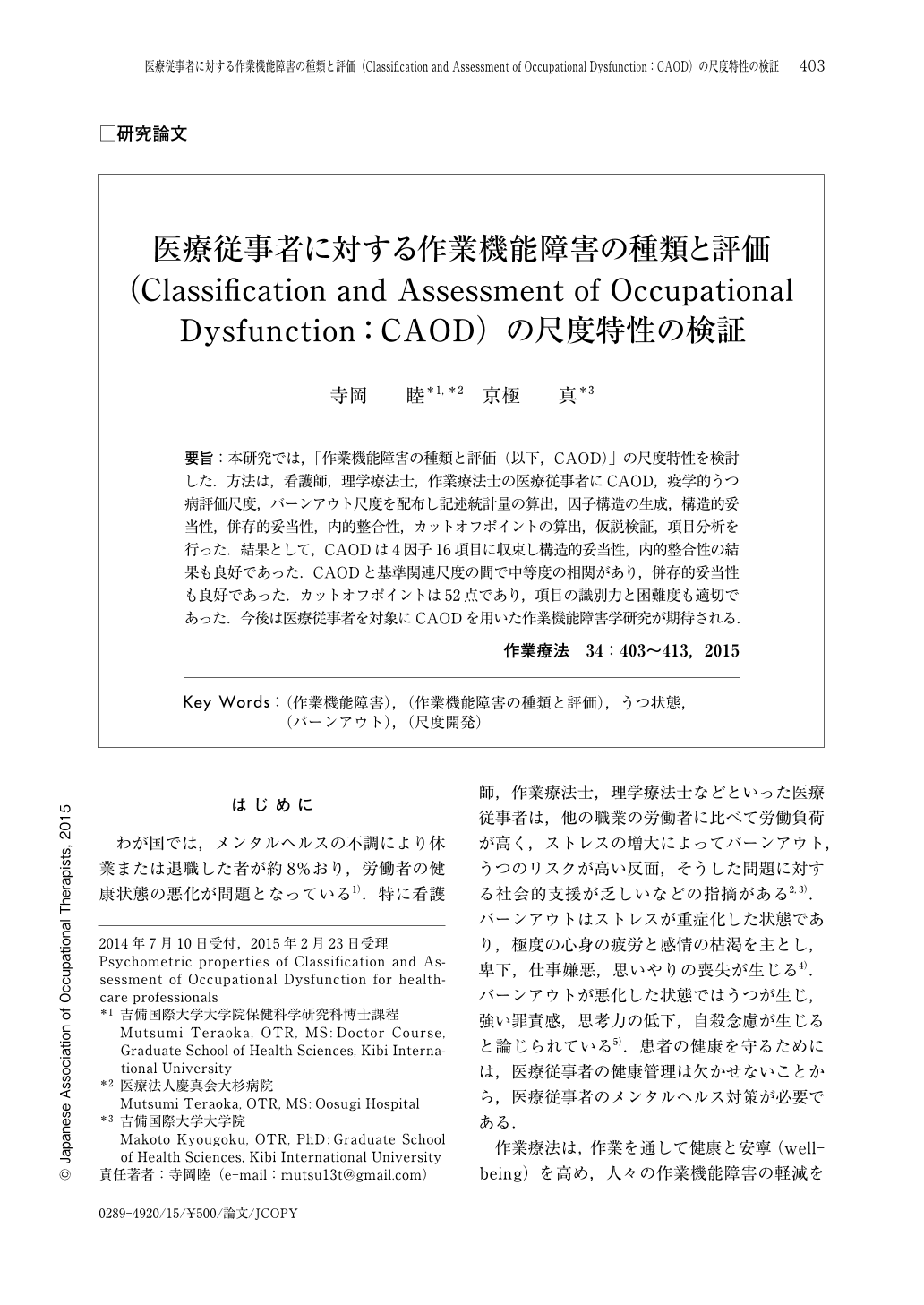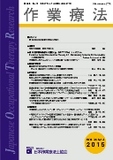Japanese
English
- 販売していません
- Abstract 文献概要
- 1ページ目 Look Inside
- 参考文献 Reference
- サイト内被引用 Cited by
要旨:本研究では,「作業機能障害の種類と評価(以下,CAOD)」の尺度特性を検討した.方法は,看護師,理学療法士,作業療法士の医療従事者にCAOD,疫学的うつ病評価尺度,バーンアウト尺度を配布し記述統計量の算出,因子構造の生成,構造的妥当性,併存的妥当性,内的整合性,カットオフポイントの算出,仮説検証,項目分析を行った.結果として,CAODは4因子16項目に収束し構造的妥当性,内的整合性の結果も良好であった.CAODと基準関連尺度の間で中等度の相関があり,併存的妥当性も良好であった.カットオフポイントは52点であり,項目の識別力と困難度も適切であった.今後は医療従事者を対象にCAODを用いた作業機能障害学研究が期待される.
Purpose: To develop the Classification and Assessment of Occupational Dysfunction (CAOD) for healthcare practitioners (nurses, physical therapists, and occupational therapists) and to confirm its validity and reliability. Methods: To assess the validity and reliability, healthcare practitioners (n = 674) responded to a questionnaire based on CAOD, Center for Epidemiologic Studies Depression Scale (CES-D), and Burnout Inventory. CAOD was examined using the following parameters: confirmatory factor analysis (CFA), concurrent validity, internal consistency, cut-off point, multitrait scaling analysis (MSA), and item response theory (IRT). Results: CFA of CAOD had 16 items and 4 factors (CFI = 0.915, RMSEA = 0.071). Conceptual correlations between CES-D (r = 0.541 to 0.341) and Burnout Inventory (r = 0.614 to -0.269) were moderately supported. Cronbach's alpha coefficients were 0.816 and 0.912. The best cut-off point using ROC analysis was a score of 52. Multitrait scaling confirmed that CAOD had good item convergent and discriminant validity. Items of CAOD fit according to IRT models. This implies that it is related to problems of daily life and mental illness. Conclusion: CAOD will use the study of Occupational Dysfunction for healthcare practitioners.

Copyright © 2015, Japanese Association of Occupational Therapists. All rights reserved.


